Abstract
Indole-3-acetic acid-1′-14C (IAA-14C) and tryptophan-1-14C injected in small amounts into cotyledons of Phaseolus coccineus L. seedlings were found to be translocated acropetally into the epicotyls and young shoots. Similarly IAA-14C was translocated acropetally into coleoptiles of Zea mays following injection into the endosperms. Labeled metabolites of the injected compounds were also extractable from shoot tissue. However, evidence that IAA-14C itself was translocated acropetally was obtained by collection in agar blocks applied to cut surfaces of coleoptiles of injected seedlings. The acropetal translocation in Phaseolus was shown not to occur in the transpiration stream but in living tissue. Cotyledons of Phaseolus coccineus and Phaseolus vulgaris contain extensive vascular tissue.
Tryptophan-14C was not actively translocated through excised segments of Phaseolus coccineus epicotyl and Zea mays coleoptile when supplied from donor agar blocks in concentrations as high as 100 μm. The small amount of tryptophan-14C which did reach receiver blocks when high concentrations were used may be accounted for by passive diffusion through the fluid-filled xylem vessels. Translocation of a non-toxic dye, Light Green SF Yellowish, through xylem vessels was found to occur when supplied from donor blocks placed acropetally or basipetally. Metabolism of the supplied tryptophan-14C by the tissue segments was shown to occur during the 3 to 6 hour translocation experiments. IAA-14C was transported in a strictly basipetal manner in both tissues. Only 1 labeled compound with an RF value of IAA was found in receiver blocks. Composition of a simple green safelight suitable for work in plant physiology is described.
Full text
PDF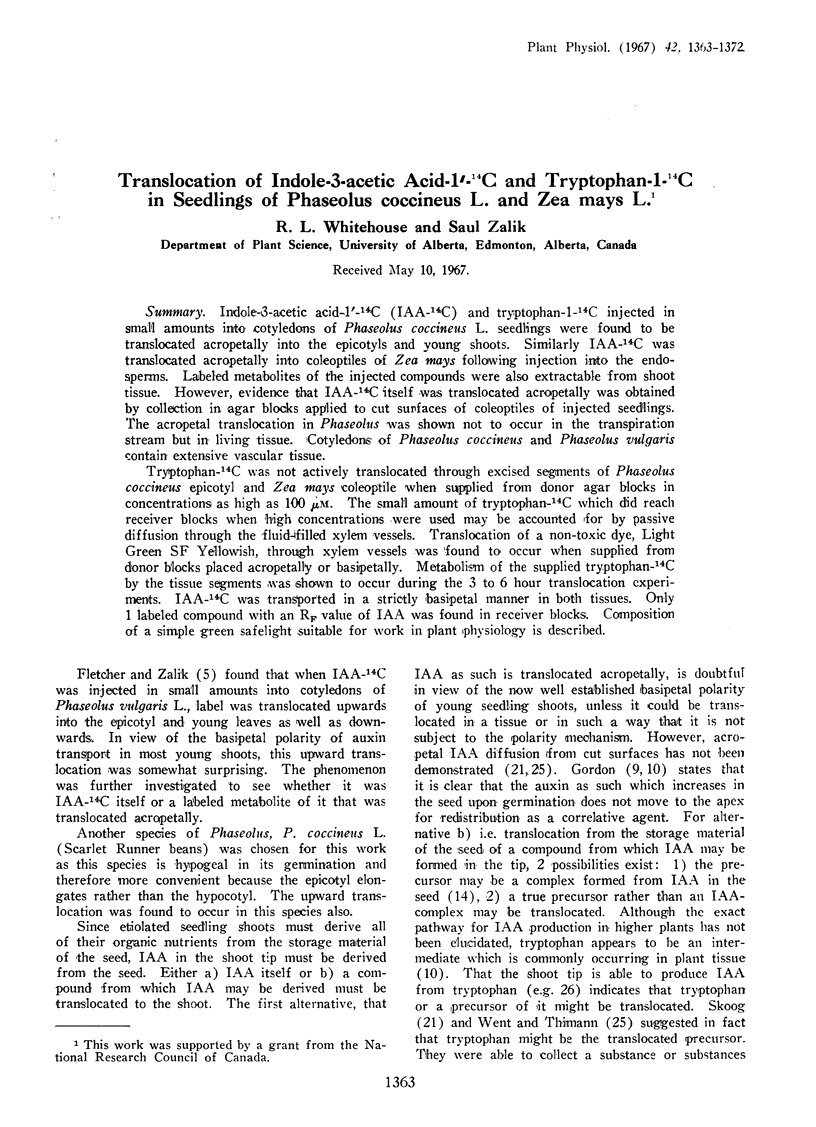
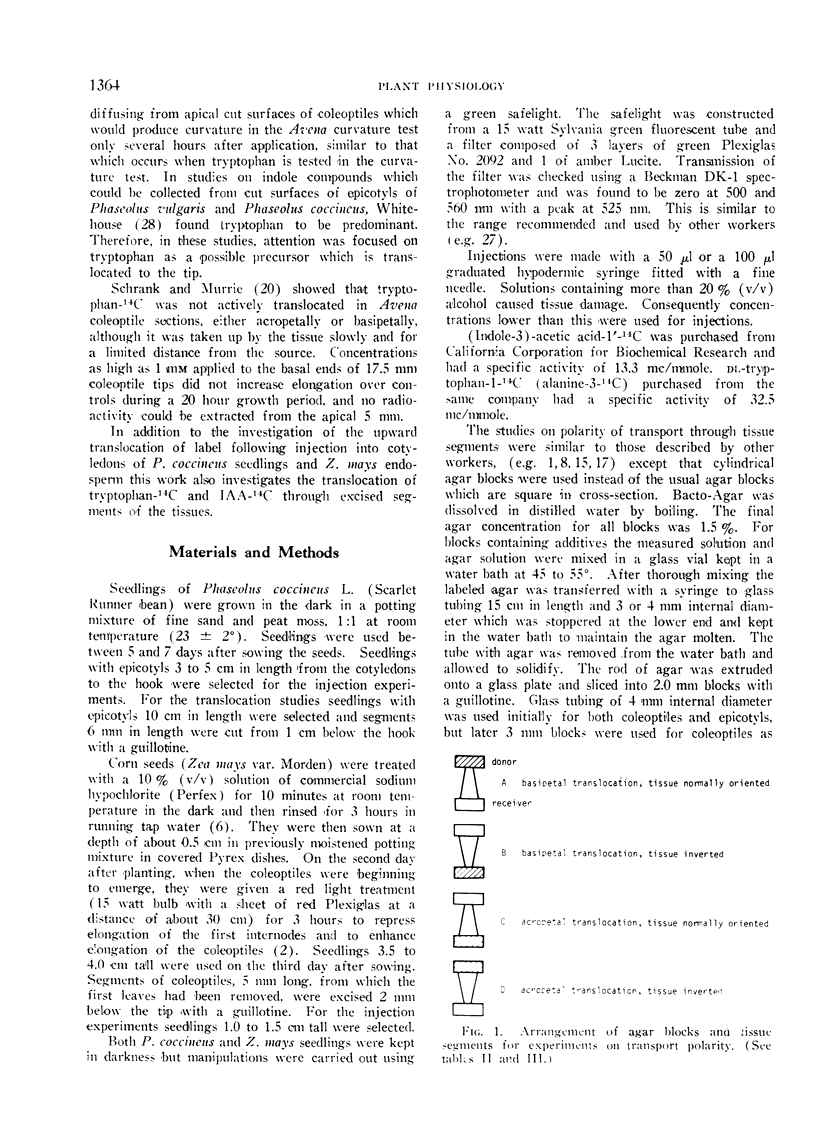
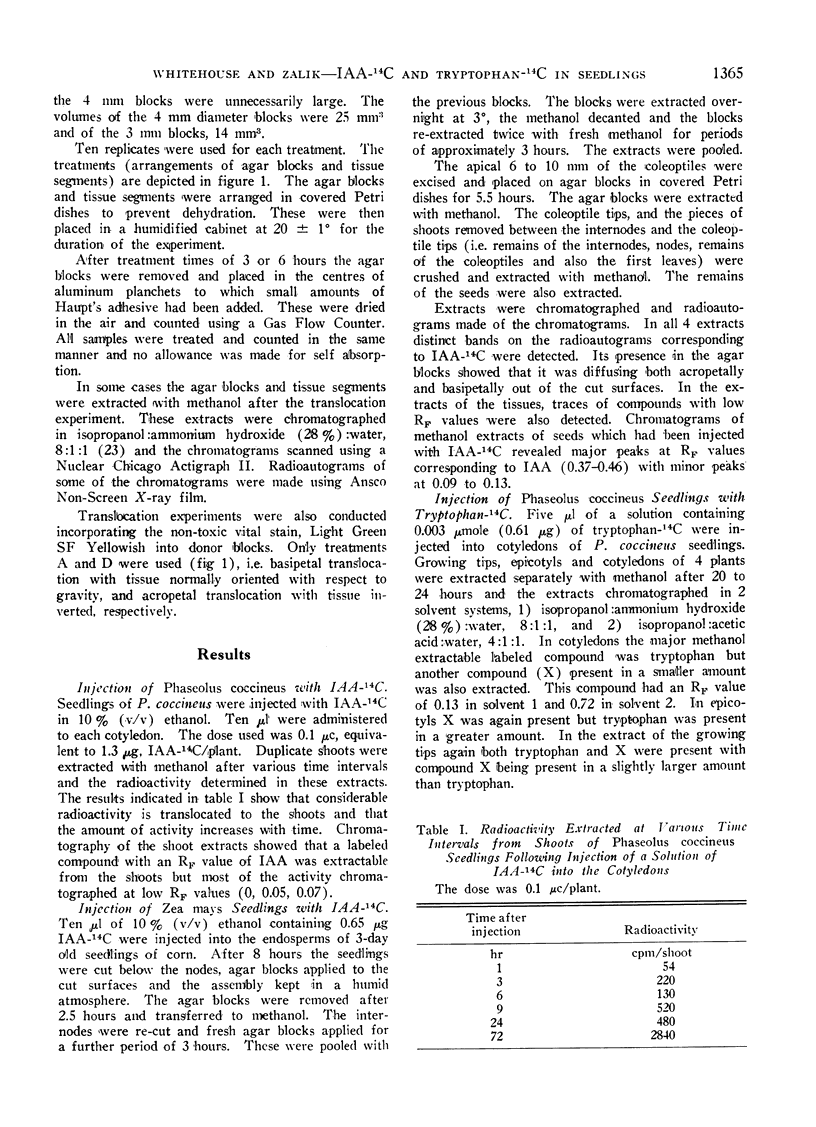
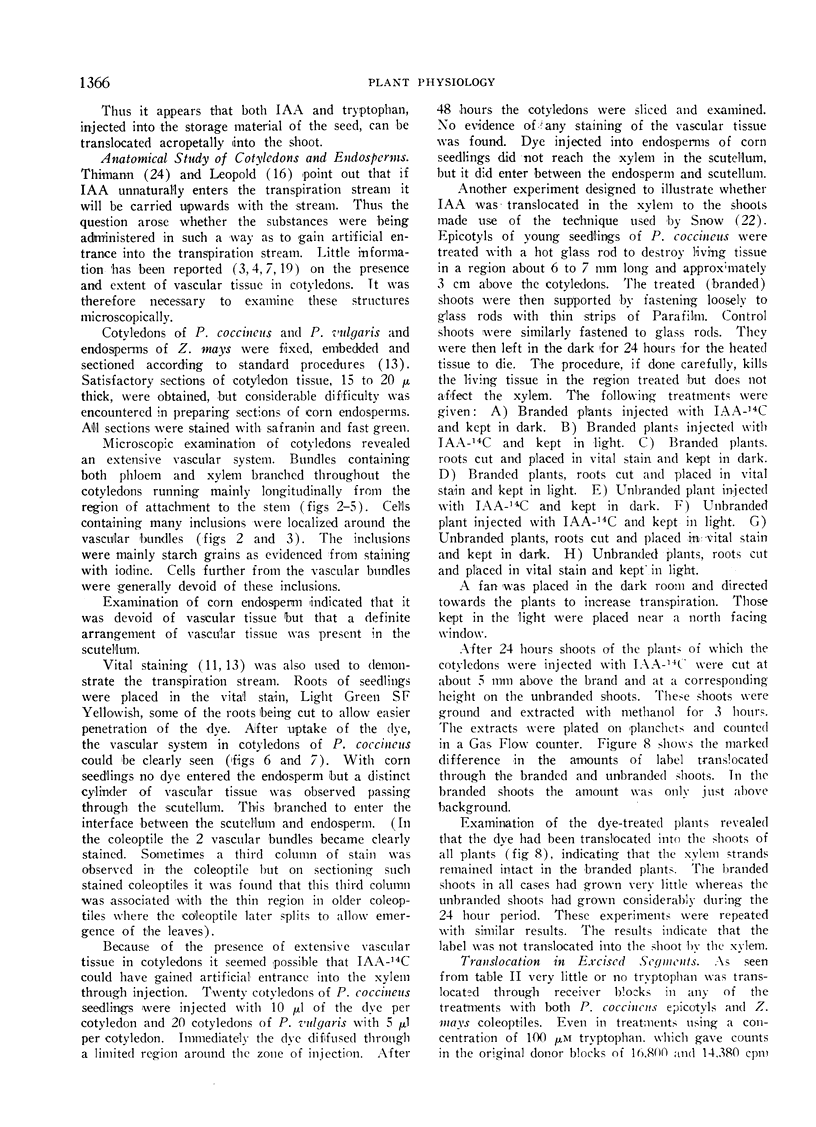
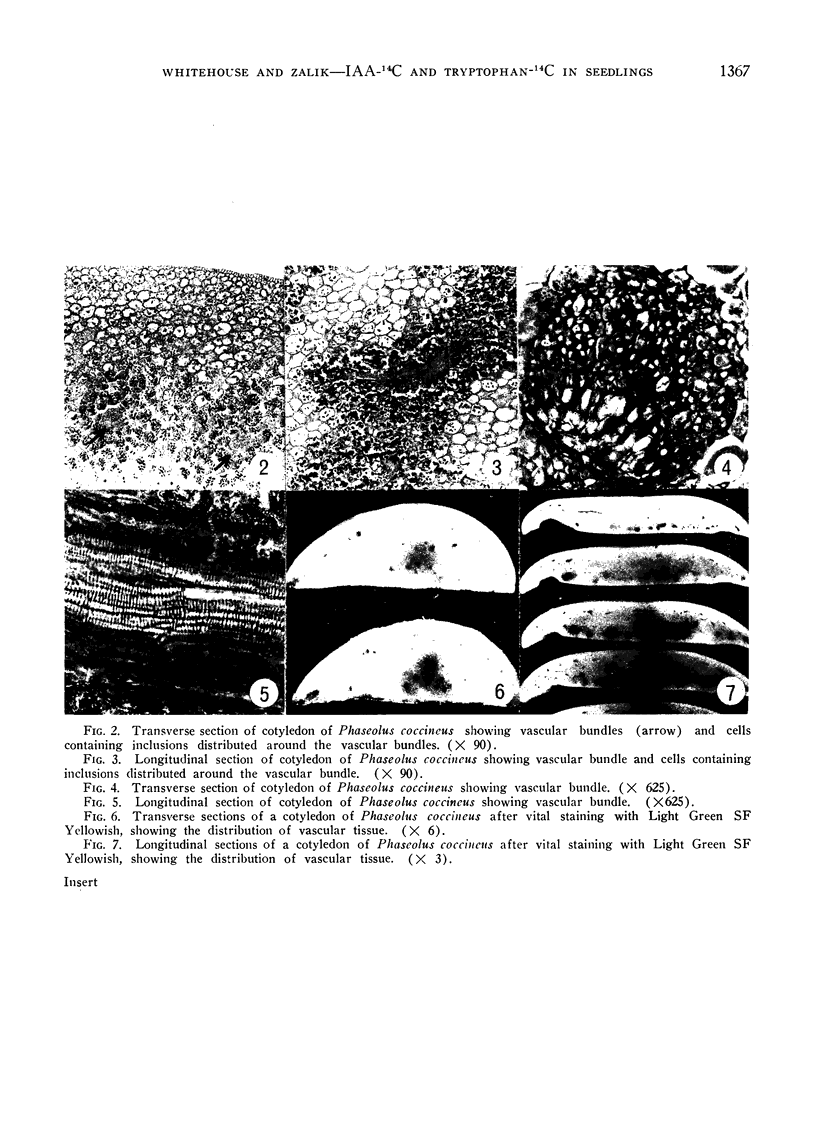
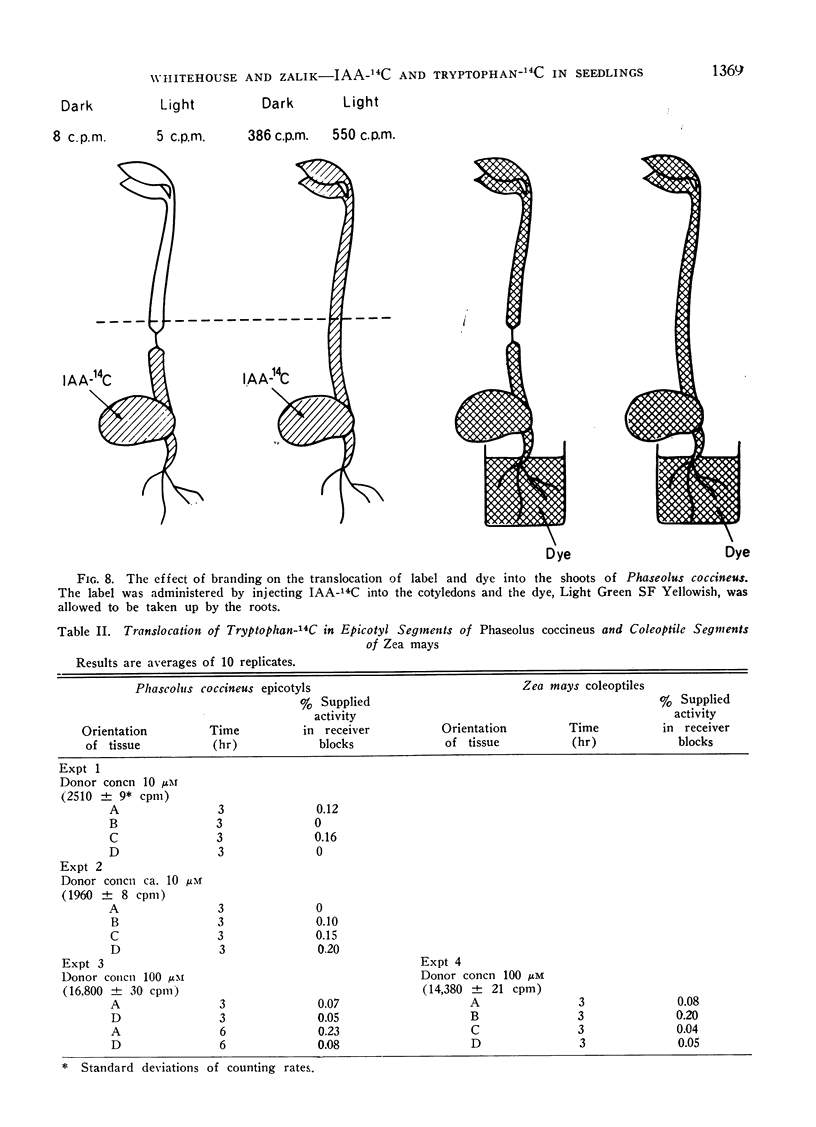
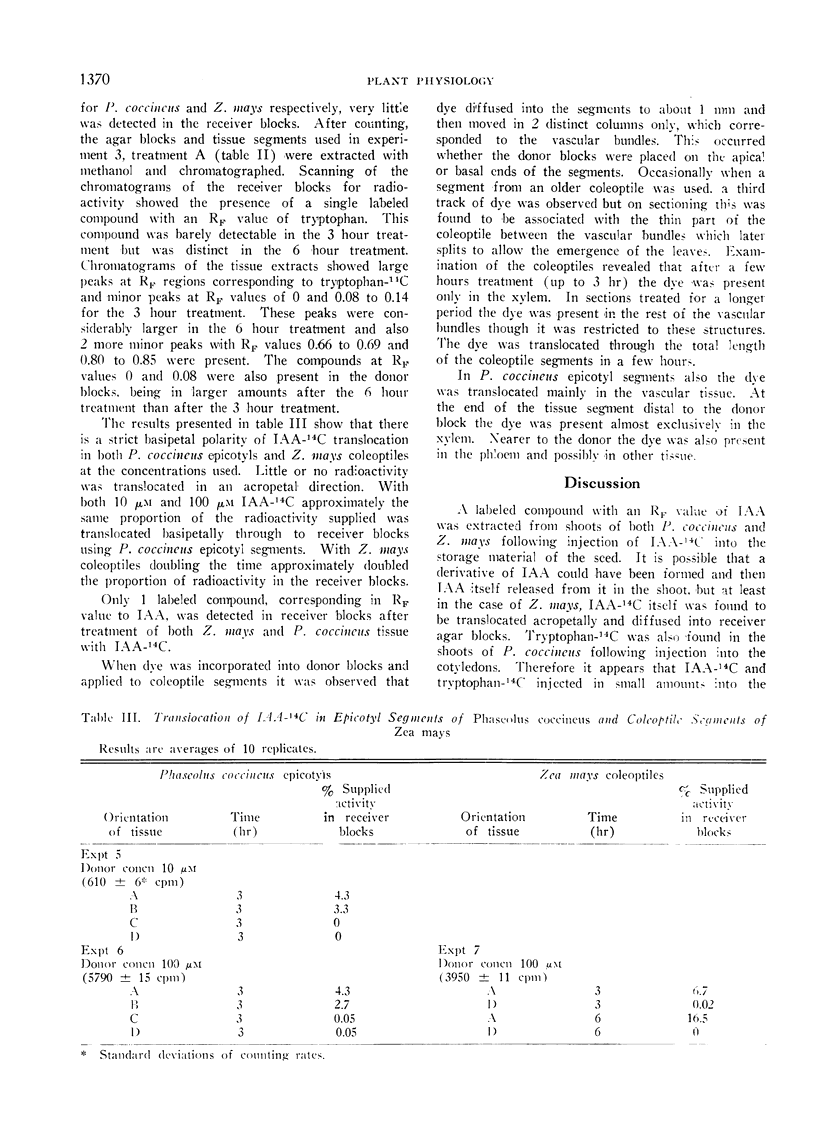

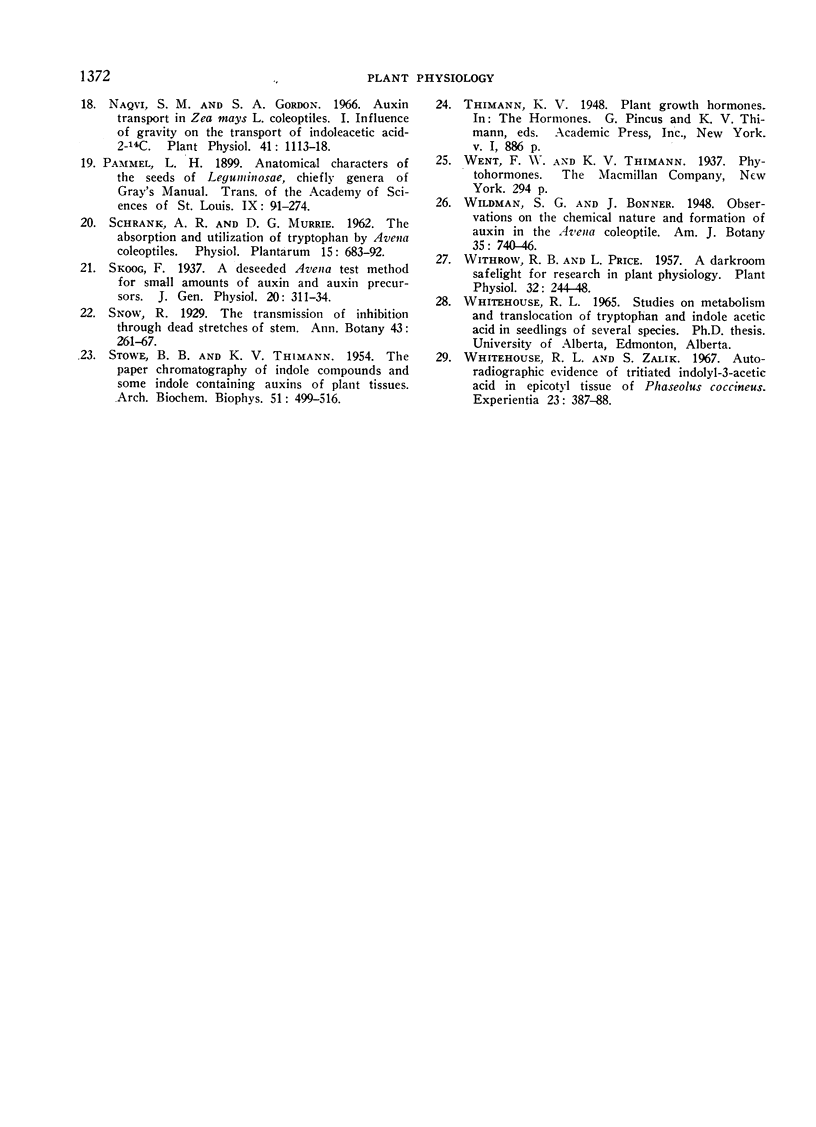
Images in this article
Selected References
These references are in PubMed. This may not be the complete list of references from this article.
- Black M. K., Osborne D. J. Polarity of Transport of Benzyladenine, Adenine and Indole-3-acetic Acid in Petiole Segments of Phaseolus vulgaris. Plant Physiol. 1965 Jul;40(4):676–680. doi: 10.1104/pp.40.4.676. [DOI] [PMC free article] [PubMed] [Google Scholar]
- Briggs W. R. Mediation of Phototropic Responses of Corn Coleoptiles by Lateral Transport of Auxin. Plant Physiol. 1963 May;38(3):237–247. doi: 10.1104/pp.38.3.237. [DOI] [PMC free article] [PubMed] [Google Scholar]
- Fletcher R. A., Zalik S. Effect of Light of Several Spectral Bands on the Metabolism of Radioactive IAA in Bean Seedlings. Plant Physiol. 1965 May;40(3):549–552. doi: 10.1104/pp.40.3.549. [DOI] [PMC free article] [PubMed] [Google Scholar]
- Naqvi S. M., Gordon S. A. Auxin Transport in Zea mays L. Coleoptiles I. Influence of Gravity on the Transport of Indoleacetic Acid-2-C. Plant Physiol. 1966 Sep;41(7):1113–1118. doi: 10.1104/pp.41.7.1113. [DOI] [PMC free article] [PubMed] [Google Scholar]
- STOWE B. B., THIMANN K. V. The paper chromatography of indole compounds and some indole-containing auxins of plant tissues. Arch Biochem Biophys. 1954 Aug;51(2):499–516. doi: 10.1016/0003-9861(54)90505-6. [DOI] [PubMed] [Google Scholar]
- Whitehouse R. L., Zalik S. Autoradiographic evidence of tritiated indolyl-3-acetic acid in epicotyl tissue of Phaseolus coccineus. Experientia. 1967 May 15;23(5):387–388. doi: 10.1007/BF02144534. [DOI] [PubMed] [Google Scholar]
- Withrow R. B., Price L. A Darkroom Safelight for Research in Plant Physiology. Plant Physiol. 1957 May;32(3):244–248. doi: 10.1104/pp.32.3.244. [DOI] [PMC free article] [PubMed] [Google Scholar]



